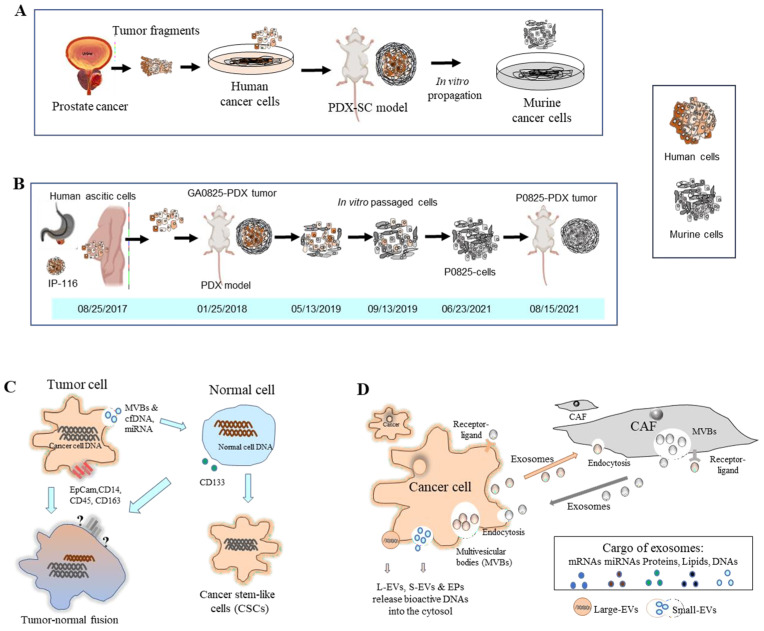Figure 4.
Human–mouse oncogenic transformation in a PDX model and hypotheses of tumor–normal cell oncogenic transformations. (A) In prostate cancer, human cells in PDXs were reportedly taken over by murine stromal cells (Adapted from Pathak et al. 1997, Ozen et al. 1997, and Multani et al. 1999) [32,33,34]. (B) In GAC PDX models, ascitic cells xenografted into a murine PDX turned murine stromal cells into oncogenic P0825 cells in a time-progressive manner (adapted from Jin et al., 2023) [31]. (C) Theories have been proposed regarding oncogenic transformations between tumor and normal cells. The tumor–normal cell fusion theory suggests merged DNAs, but some cancer markers may not be detected due to lost expressions. Another hypothesis is that cancer cells release cell-free DNAs (cfDNAs) and miRNAs to convert normal cells to cancer stem-like cells (adapted from Goldenberg 2012, 2013, 2014 [35,36,37]; García-Olmo et al., 2012 [38]; and Weiler and Dittmar 2019 [39]. (D) Crosstalks between cancer cells and stromal cells occur via exosomes that exchange through endocytosis, receptor–ligand interactions, and multivesicular bodies (MVBs). Cancer cells release bioactive DNAs into the cytosol via large extracellular vesicles (L-EVs), small EVs (S-EVs), and extracellular particles (EPs) (adapted from Fu et al., 2016, and Malkin and Bratman 2020 [40,41].

